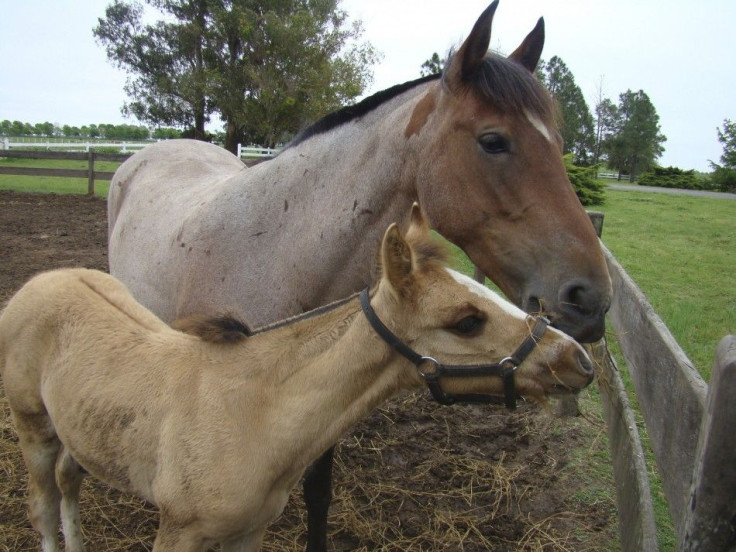Whoa There! Scientists Say Horse Breeders Should Rein In Hot Iron Branding

Horse ranchers should abandon the practice of branding young foals with hot irons to mark their stocks, a new study argues.
Brands on horses are used to identify an animal's breed, owner and individual number. Now, researchers from the University of Veterinary Medicine in Vienna say, in a paper published in the Veterinary Journal, that independent investigators are often not able to read the marks made by traditional hot iron branding.
"Branding is clearly associated with local tissue damage, and the markings are often insufficiently clear to be decoded, even by experienced observers or after the horse has died," author Jorg Aurich said in a statement on Friday.
Aurich and his coauthors examined the brands of 248 horses involved in an equestrian competition, and they also examined brand markings and tissues from 28 euthanized horses. While three independent investigators could make out a horse's breed symbol 84% of the time, they could only identify a double-digit branding number correctly less than 40% of the time.
"In conclusion, hot iron branding in horses causes lesions compatible with third degree thermal injury but does not always allow identification of horses," the authors wrote.
Some horse ranchers have already abandoned hot iron branding for the newer technique of freeze branding, which uses an iron chilled with liquid nitrogen or dry ice. Freeze branding damages the horse's pigment-making hair cells, resulting in a white growth of hair where the animal has been branded. The technique has its drawbacks, though; if the horse's hair grows out, the brand becomes fuzzy and unreadable.
Branding is not required in the U.S., except for wild horses and burros taken off of federal lands by the Bureau of Land Management. These horses are freeze-branded on the left side of their necks. All racehorses in North America are tattooed on the underside of their upper lip. The marking is a series of numbers and letters that identify the horse's year of birth and an individual registration number.
Though ranchers in many countries still prefer the hot iron, which requires less expensive equipment, "there really isn't any reason to continue to mark horses in this outdated way," Aurich says.
SOURCE: Aurich et al. "Readability of branding symbols in horses and histomorphological alterations at the branding site." The Veterinary Journal, published online 9 August 2012.
© Copyright IBTimes 2024. All rights reserved.











